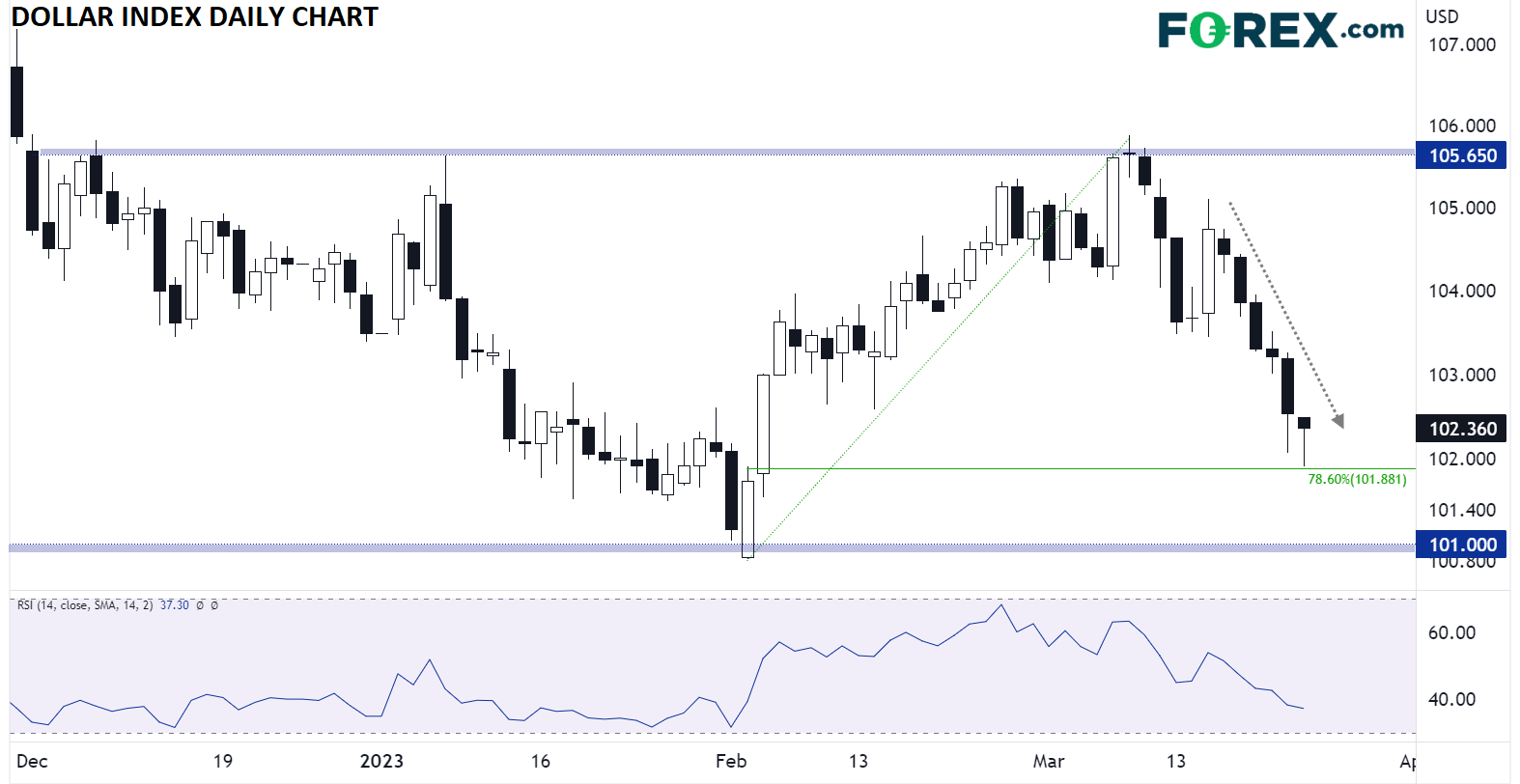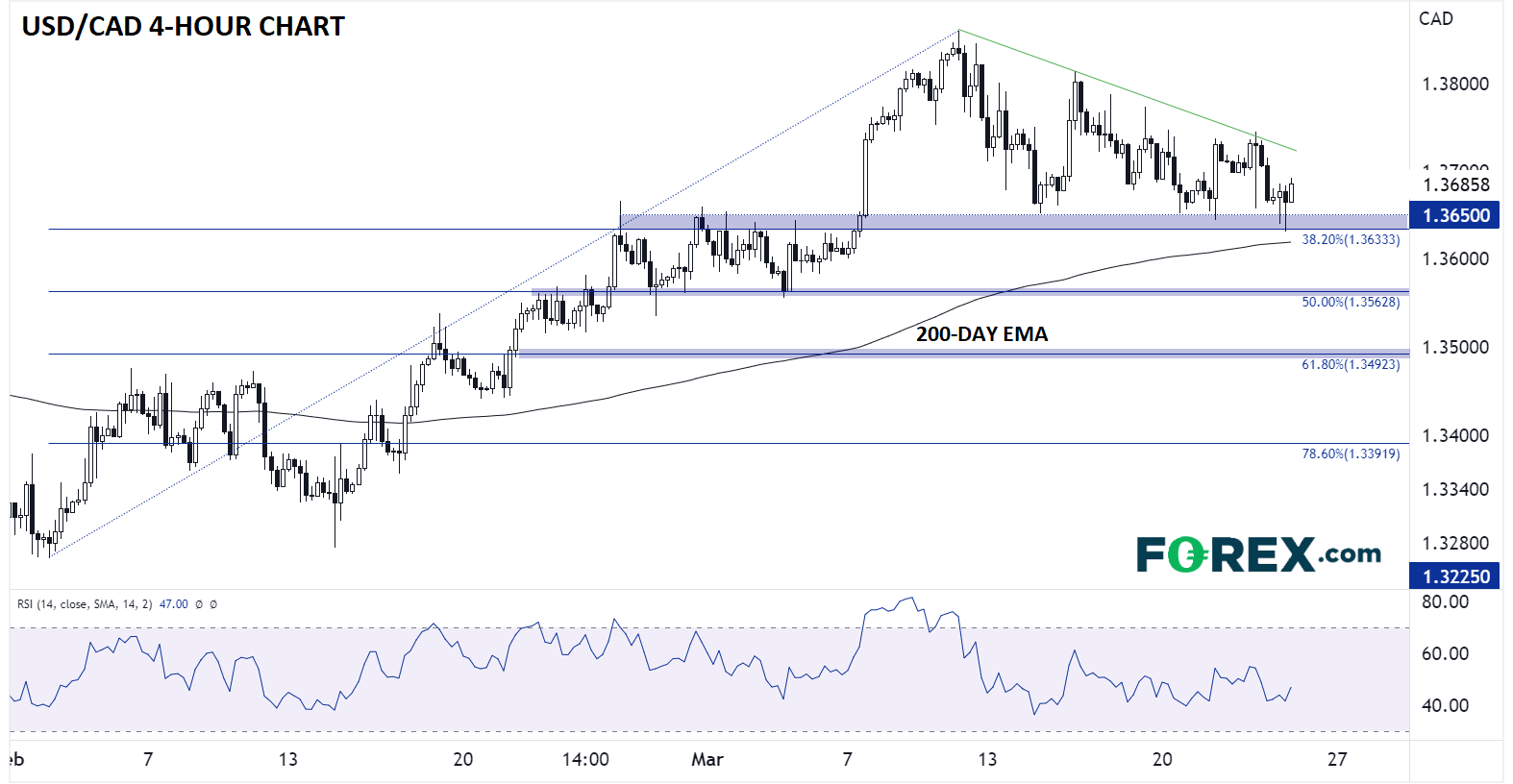- USD/CAD is forming a potential descending triangle pattern into 1.3650 support.
- A break lower could expose support at 1.3560 or 1.3500 next.
- Canadian retail sales and US PMIs on Friday will play a big role in whether the pair can hold above support.
It’s been a whirlwind week already between a handful of major central bank meetings and top-tier economic data, but US dollar weakness has been a key theme. Markets have speculated that the Fed is either done or nearly done raising interest rates in the wake of yesterday’s “dovish hike,” and as a result, the US dollar index is working on its sixth consecutive bearish day.
Source: StoneX, TradingView. Note this product may not be available to trade in every region.
Meanwhile, North of the 49th parallel, the Canadian dollar has seen more mixed price action after a mixed CPI report early in the week, with the loonie sitting roughly in the middle of the week-to-date performance of major currencies.
USD/CAD technical analysis: All eyes on 1.3650
Looking at the USD/CAD chart, the North American pair has put in a series of lower highs over the past two weeks, though rates have thus far found a floor near 1.3650. beyond approximating the 38.2% Fibonacci retracement of the February-March rally, that level represents previous-resistance-turned-support from the early March highs.
Within the next couple of trading days, we should have a breakout from the current consolidation pattern, with a break lower targeting the next Fibonacci retracements near 1.3560 or 1.3500. Meanwhile, an upside breakout would target the year-to-date highs above 1.3800 next.
Source: StoneX, TradingView
USD/CAD fundamental data to watch
Ahead of the weekend, Canada will release its monthly retail sales report for January. Though dated, the report will still provide insight into the health of the Canadian consumer, with economists expecting a 0.7% m/m gain after 0.5% growth the previous month.
After that, the “flash” US PMI report will give a timely estimate of manufacturing and service sector activity in the world’s largest economy. Readings below 50 could hint that banking fears and Fed rate hikes are finally taking their toll after a strong start to the year.



